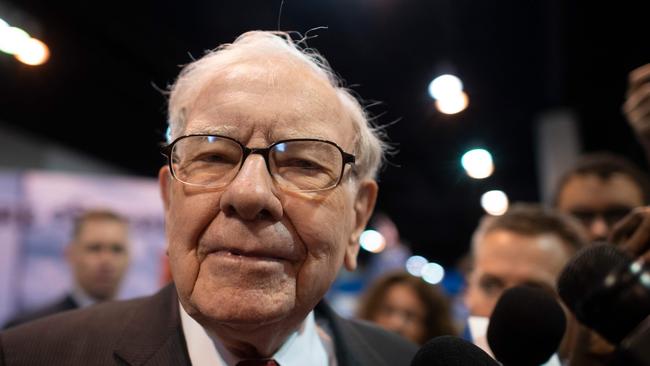
But I am old enough to remember the day “Mr Mac” erupted in our local version of a milk bar. It was around 1974 at the peak of the wild inflation that rocked the world at the time of the oil crisis.
Yet another customer had fronted up to the unfortunate shopkeeper with a complaint about the price of some item and the generally genial Mr Mac was mad as hell and not going to take it any more.
“It’s not me pushing up the bloody prices, I can’t keep up with it either,” he roared at a shop full of pensioners and school kids, both groups equally dismayed as to why the milk and chocolates seemed to cost more every time we dropped in.
That was inflation on the street: the prices just kept going higher. In that scenario, if you don’t have the capacity to crank up your income — or your investment returns — your spending power drops and you are poorer than you were before.
Fortunately, as investors we do have the capacity to counter inflation, which is now presenting a real threat after years of artificially suppressed interest rates.
The first point is of course that it remains a threat, characterised by a whopping 4 per cent annual inflation “read” in the US last week. But it is a threat to be taken seriously.
Legendary investor Warren Buffett says: “We are seeing very substantial inflation — the costs are just up, up, up.”
Top-rated economic consultant Ed Yardeni, says: “All you have to do is open your eyes to see there is inflation pressure everywhere.”
For investors the key thing to note is the gap between what business operators in the real economy are saying about inflation and the unchanging line from central banks and economists that our “transitory” inflation will not take off once the economy normalises post-COVID.
Certainly, James Hardie CEO Jack Troung made it very clear mid week when he said the building materials group was operating in a “strong inflationary environment”. In fact, Troung pointed out that input costs for the company — raw materials and freight — would be $150m more than expected in the months ahead.
Listening to business leaders as opposed to market analysts, it is likely we will see many more episodes of inflation break out this year, especially in construction, information technology and mining services, where labour supply is tight and raw material costs are lifting.
For now, the jury is out on how long inflation will pressure the system. The risk for an investor is that by the time the picture is clear, the investment markets will have moved on and the winners and losers will be more than obvious.
Fund managers such as Kristiaan Rehder of Kardinia Capital are not convinced by the ever sanguine notes from the economists. He told The Australian this week: “I don’t agree, I think we are going to see inflation that is persistent from here.”
Importantly, these professional investors are not waiting to see if the inflation forecasts are right or wrong — they are moving now. It is one of the key reasons they are selling so-called “growth” stocks such as Afterpay and Kogan (both now down about 50 per cent from recent peaks) and buying the traditional inflation protection of “value” stocks linked to hard assets. An industry-wide survey shows 30 per cent of the fund managers surveyed are overweight banks, 14 per cent are overweight energy stocks and 20 per cent are overweight materials (miners). As a group, the vast majority also expect above average inflation.
As investors will know, the market does not wait for events to occur — it’s one of the reasons we are seeing anything speculative getting smashed just now. Just look at bitcoin, the ultimate speculation: it fell by a third earlier this week.
The textbook response to serious inflation is to move towards hard assets: property and commodities. There will also be a case for strong listed companies that are price makers, not price takers — so that they can pass on rising costs to their own customers.
Outside the sharemarket, investors will look again at gold (in every permutation, from bullion to gold miners) and inflation-linked bonds.
In contrast, inflation worriers will have an aversion to stocks where there is risk they will not sustain profits or indeed ever make a profit. Outside the market, the area where there could be challenges is obviously cash. If you thought cash was not rewarding with low deposit rates, wait until you try it with low rates and rising prices. Fixed-income markets will also face difficulties as selected bond prices are set to fall further.
There will be debate over which companies are price makers, or whether gold can once again be an inflation hedge (it certainly offers a more convincing non-correlation to sharemarkets than bitcoin).
But remember, we know from recent surveys that professional investors are already following the well-trodden path of inflation protection — mining and energy stocks, banks and anything else that can withstand rising prices.
After all, they need to convince you they can handle inflation even if the vast majority of them have no experience in dealing with the issue. But they also know if they don’t move now they could end up like Mr Mac, on the wrong side of the inflation trade.




I don’t remember ever having to deal much with inflation as an investor — it’s an unknown challenge for the majority of people in the market.